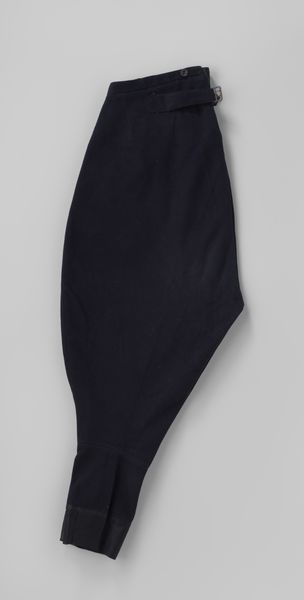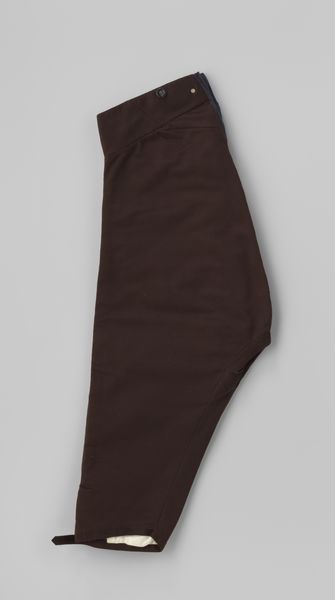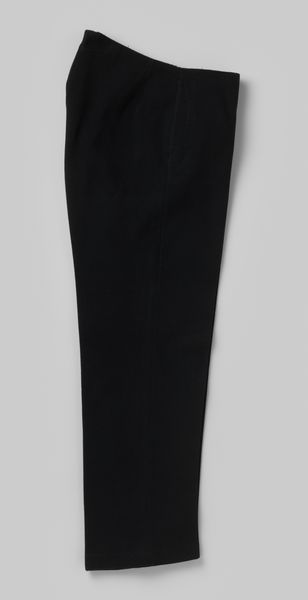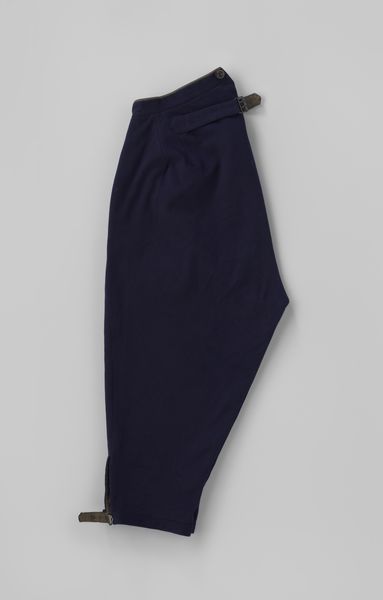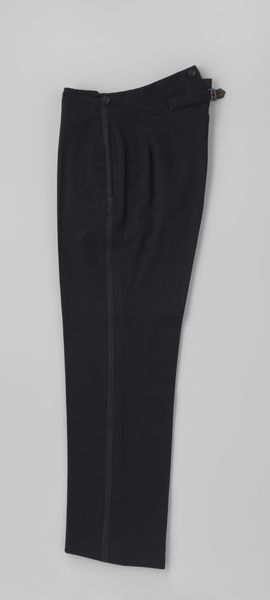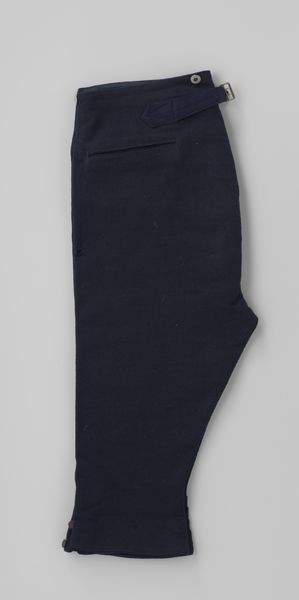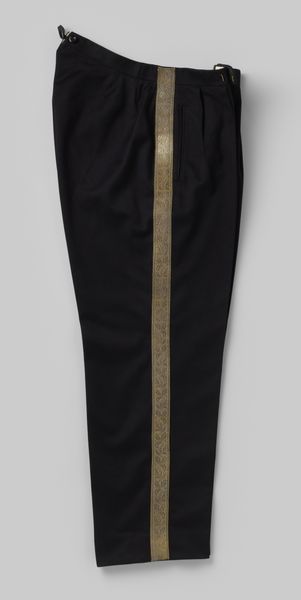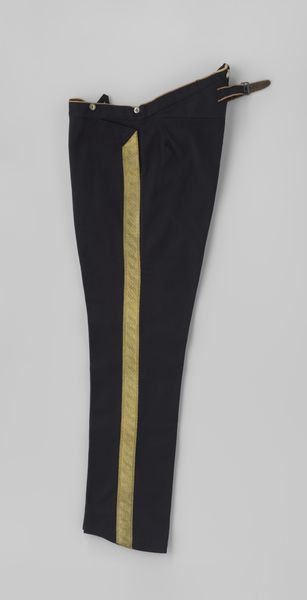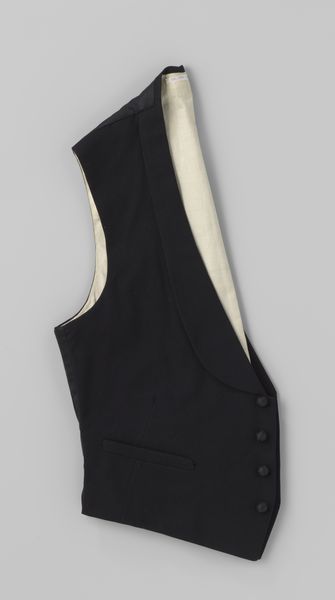
Kostuum van zwart laken, bestaande uit een rokjas, vest en een kniebroek c. 1800 - 1825
0:00
0:00
photography
#
portrait
#
fashion mockup
#
product fashion photography
#
fashion merchandise
#
clothing promotion photography
#
photography
#
clothing photography
#
sportswear sale photography
#
product mock up
#
clothing photo
#
retail photography
#
clothing design
Copyright: Rijks Museum: Open Domain
Curator: Here we have a photographic still life of a man’s suit dating from around 1800 to 1825. The ensemble consists of a frock coat, waistcoat, and knee breeches made from black broadcloth. Editor: The immediate impression is one of severe formality. The stark black fabric, meticulously arranged against a neutral background, projects a sense of somber elegance, wouldn’t you say? Curator: Absolutely. The photographer's choice to isolate the garment like this draws attention to the cut and construction, to the specific tailoring that defines its shape. The drape of the cloth, the articulation of the seams – they all speak to a very particular aesthetic. The lines are crisp and refined. We can see the principles of Neoclassical order at play here, despite the obvious absence of the figure who would wear it. Editor: Right. The Neoclassical era was marked by dramatic social upheaval. I can’t help but view such austere fashion in connection to the tumult of revolution and empire. This very black suit could easily be associated with powerful industrialists who took center stage as aristocracy faded away, the bourgeoise adopting rigid visual standards that would exclude laborers and the working class. The fabric, sourced from sheep farming – the suit signals power. Curator: You raise an excellent point about class. Still, if we consider the material qualities themselves – the texture of the cloth, how the light interacts with its surface, we begin to observe details of its unique qualities of wool. Semiotically speaking, we recognize clear codes related to the era, especially given what we know of period paintings. This kind of study leads us to better understand the overall language that a garment embodies. Editor: The lack of context in the image also shapes how the garment is interpreted. A headless, disembodied suit raises critical questions about consumption. Are we meant to ponder ideas about power? Do these clothes define the person, or does the person define the clothes? Curator: Precisely. Considering your remarks, perhaps our formalist appreciation is in need of constant dialogue. It allows the artwork to live and be a vital site of inquiry. Editor: Agreed. Seeing this suit prompts me to look for new ways of thinking about cultural evolutions—a potent object indeed.
Comments
No comments
Be the first to comment and join the conversation on the ultimate creative platform.
